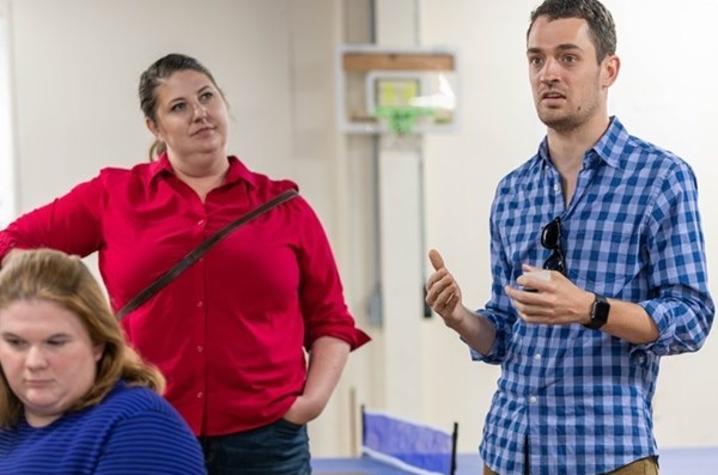Event Educates UK Students, Organizations on ‘Antisemitism Past and Present’
LEXINGTON, Ky. (April 29, 2021) — In an effort to foster productive dialogue about antisemitism, the University of Kentucky’s Fraternity and Sorority Life, the Kentucky Interfraternity Council (IFC) and Kentucky Hillel hosted an educational event on Tuesday.
A Bold Vision: A&S Alum Helping Create Brighter Future for Eastern Kentucky
 LEXINGTON, Ky. (April 29, 2021) — Luke Glaser was once a struggling math student. Academically, he often excelled. But learning polynomials, as well as quadratic equations and functions, just didn’t seem applicable to his life as a high school teenager.
LEXINGTON, Ky. (April 29, 2021) — Luke Glaser was once a struggling math student. Academically, he often excelled. But learning polynomials, as well as quadratic equations and functions, just didn’t seem applicable to his life as a high school teenager.
“I hated math, and I took AP classes to simply not have to take math in college.”
Restaurateur and A&S Alumna Ouita Michel Releases First Cookbook
By Danielle Donham and University Press of Kentucky
LEXINGTON, Ky. (April 28, 2021) — Kentucky restaurateur and University of Kentucky alumna Ouita Michel has released her first cookbook, “Just a Few Miles South: Timeless Recipes from Our Favorite Places,” stuffed with recipes celebrating the Bluegrass, just in time for the Kentucky Derby.
College of Arts & Science Commencement #2
The noon commencement ceremony will include these majors:
*Social Sciences: Anthropology, Economics, Environmental and Sustainability Studies, Gender and Women’s Studies, Geography, Health, Society and Populations, Political Science, Psychology, Sociology, US Culture and Business Practices, Liberal Studies, Applied Anthropology, Digital Mapping
College of Arts & Science Commencement #1
The 9 a.m. commencement ceremony will include these majors:
*Humanities: African American and Africana Studies, English, Modern and Classical Languages, Literatures and Languages, History, International Studies, Linguistics, Philosophy, Spanish / Hispanic Studies, Writing, Rhetoric and Digital Media, Foreign Language and International Economics, Classics, German, French, Teaching English as a Second Language, Linguistic Theory and Typology, Teaching World Languages, Creative Writing
*Natural, Physical and Mathematical Sciences: Biology, Chemistry, Physics and Astronomy, Earth and Environmental Studies, Geological Sciences, Mathematics, Mathematical Economics, Neuroscience, Statistics, Applied Statistics
A&S Voices - Megha Ambalia
International student Megha Ambalia, a biology major, discusses her expierience at UK and why she loves A&S!
